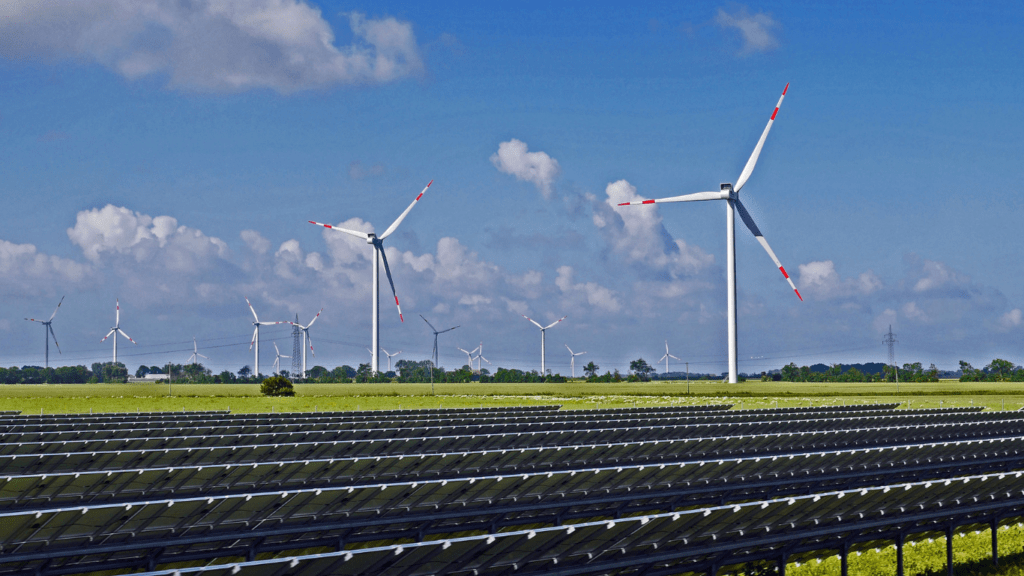Current State Of Environmental News
Environmental news today covers an array of pressing issues. Climate change, deforestation, pollution, and biodiversity loss are top headlines. Major international bodies like the UN and IPCC consistently release eye-opening reports that underscore the urgency. Media outlets emphasize these topics to raise public awareness and spur action.
Scientific findings highlight critical data and trends. For instance, global temperatures have risen by approximately 1.2°C since pre-industrial times, impacting weather patterns and sea levels. The Amazon rainforest, often called the “lungs of the Earth,” is losing vast areas annually due to logging and agricultural expansion.
Government policies and international agreements are frequently in the spotlight. The Paris Agreement aims to limit global warming to well below 2°C. Recently, many countries, including the US and China, have committed to significant carbon reduction targets by 2030 and carbon neutrality by 2050-2060.
Innovative solutions and technological advances receive considerable attention. Renewable energy sources like solar, wind, and hydro-power are rapidly advancing, reducing dependence on fossil fuels. Additionally, conservation efforts, such as reforestation projects and wildlife protection initiatives, are being implemented worldwide.
Public engagement and grassroots movements play crucial roles. People are more informed and active, participating in environmental protests and supporting eco-friendly practices. Social media amplifies these efforts, creating a platform for advocacy and information sharing.
Economic factors also shape environmental news. Green industries are growing, offering sustainable products and services. Investments in clean energy and green technology are increasing, reflecting a shift towards sustainability.
Environmental news serves as a critical tool in educating and motivating global citizens. By staying updated, individuals can better understand the complexities and contribute to meaningful solutions.
Major Global Environmental Issues
The main global environmental issues include climate change, deforestation, ocean pollution, and biodiversity loss. Addressing these problems requires coordinated efforts and effective solutions.
Climate Change
Climate change disrupts weather patterns, exacerbates natural disasters, and threatens ecosystems. According to NASA, the Earth’s temperature has increased by roughly 1.2°C since the late 19th century, largely due to human activity. Reducing greenhouse gas emissions, through renewable energy adoption and energy efficiency improvements, is crucial for mitigating climate change. Many countries have committed to carbon neutrality by mid-century.
Deforestation
Deforestation results in habitat loss, reduced biodiversity, and increased carbon dioxide levels. The Amazon rainforest, which is crucial for global oxygen production and carbon dioxide absorption, loses about 10,000 square kilometers annually due to logging and agricultural expansion. Supporting sustainable forestry practices and reforestation projects can help combat deforestation. Policies promoting sustainable land use and enforcing stricter logging regulations are essential.
Ocean Pollution
Ocean pollution, primarily from plastic waste, affects marine ecosystems and human health. Reports indicate that about 8 million tons of plastic enter oceans each year, harming marine life and entering the food chain. Implementing policies to reduce plastic production and increase recycling, alongside cleanup efforts, can mitigate ocean pollution. Innovations like biodegradable materials and removal technologies are also critical.
Biodiversity Loss
Biodiversity loss, driven by:
- habitat destruction
- climate change
- overexploitation
threatens ecosystems’ stability and resilience. The International Union for Conservation of Nature (IUCN) reports that over 37,000 species face extinction. Conserving critical habitats, protecting endangered species, and preserving genetic diversity are strategies to counter biodiversity loss. International agreements, such as the Convention on Biological Diversity, play a key role in these efforts.
Environmental issues like climate change, deforestation, ocean pollution, and biodiversity loss are interconnected. Solutions require global cooperation and engagement at all levels.
Innovative Solutions And Strategies
Addressing critical environmental issues necessitates innovative approaches. Let’s dive into how renewable energy, conservation efforts, and waste reduction programs are contributing to a sustainable future.
Renewable Energy Initiatives

- Renewable energy sources like solar, wind, and hydro power are increasingly recognized as viable alternatives to fossil fuels.
- According to the International Energy Agency (IEA), renewable energy accounted for nearly 28% of global electricity generation in 2020.
- Countries are investing in large-scale solar farms, offshore wind projects, and advanced hydroelectric plants.
- China leads in solar energy production, with over 250 GW of installed capacity, while Denmark harnesses wind power to meet over 50% of its electricity demand.
- Innovations like floating solar panels and tidal energy are also gaining traction, indicating a promising shift towards clean energy solutions.
Conservation Efforts
Global conservation initiatives aim to protect ecosystems and preserve biodiversity. Governments, NGOs, and local communities are adopting strategies to safeguard natural habitats. One notable example is the establishment of marine protected areas (MPAs) covering approximately 7% of the world’s oceans.
In Africa, anti-poaching laws and wildlife corridors help save species like elephants and rhinos. The European Union’s Natura 2000 network protects over 27,000 sites, ensuring the survival of vulnerable species. Reforestation and afforestation projects, such as the Great Green Wall initiative in Africa, aim to restore degraded land and combat desertification, benefiting both biodiversity and local communities.
Waste Reduction Programs
Effective waste management is crucial to mitigate ocean pollution and reduce landfill use. Countries and cities are implementing comprehensive waste reduction programs. For instance, Japan’s recycling efforts divert over 80% of waste from landfills. The EU’s Waste Framework Directive sets ambitious recycling targets, with member states achieving a 50% recycling rate by 2020.
Innovative approaches like Sweden’s waste-to-energy plants convert nearly 50% of household waste into energy. Many cities are banning single-use plastics and promoting circular economy principles, encouraging sustainable consumption and production patterns. Efforts like these illustrate the global commitment to reducing waste and protecting our environment.
These innovative solutions showcase how collective efforts can address pressing environmental issues, fostering a more sustainable future.
Role Of Policy And Governance
Effective policy and governance play a crucial role in addressing global environmental issues. Governments and international bodies enact regulations and agreements to mitigate impacts and implement solutions.
International Agreements
International agreements are essential in tackling global problems like climate change, deforestation, and ocean pollution. Treaties like the Paris Agreement unite countries in the goal of limiting global temperature rise to below 2°C.
The Kyoto Protocol, an earlier agreement, set binding emission reduction targets for developed countries, illustrating the global commitment to reduce greenhouse gases. The Convention on Biological Diversity (CBD) focuses on preserving biological diversity, ensuring ecosystems are protected. These agreements rely on cooperation among nations for implementation and success.
National Policy Frameworks
National policy frameworks guide individual countries in their environmental efforts. The United States, for example, has the Clean Air Act and the Clean Water Act, which regulate air and water pollution.
The European Union’s Green Deal aims to make Europe the first climate-neutral continent by 2050, targeting emissions reductions across various sectors. In China, the National Sword policy restricts waste imports, encouraging domestic recycling. These frameworks provide the basis for local actions and help countries meet international commitments.
Community And Individual Actions
Communities and individuals play significant roles in addressing environmental issues. Grassroots movements and personal lifestyle changes can contribute immensely to creating a sustainable future.
Grassroots Movements
Grassroots movements drive environmental change by mobilizing local communities. These movements, such as Fridays for Future and Extinction Rebellion, raise awareness and pressure governments to act. Fridays for Future, initiated by Greta Thunberg, organizes school strikes and demonstrations globally. Extinction Rebellion uses non-violent civil disobedience to demand policy changes addressing climate breakdown.
Local initiatives, like community-led tree planting projects, reduce carbon footprints and restore habitats. Urban gardening movements promote sustainable food practices and reduce reliance on industrial agriculture. Citizen science programs engage individuals in monitoring environmental health, providing valuable data for scientific research.
Personal Responsibility And Lifestyle Changes
Individual actions can significantly impact environmental health. Reducing single-use plastics, for example, directly decreases ocean pollution. Opting for reusable bags, bottles, and containers cuts waste and conserves resources.
Energy consumption choices influence carbon footprints. Using energy-efficient appliances, reducing water usage, and switching to renewable energy sources like solar panels mitigate climate impact. Dietary choices, such as eating locally sourced foods and reducing meat consumption, lower emissions and support sustainable agriculture.
Transportation habits also affect the environment. Choosing public transit, biking, or walking reduces greenhouse gas emissions. Participating in carpooling programs and driving fuel-efficient vehicles can further minimize environmental harm.
By actively engaging in community movements and making conscious lifestyle changes, we contribute to meaningful environmental solutions.


 Amelie Glover played a pivotal role in shaping the success of News Flip Network through her expertise and dedication. With a keen eye for detail, she focused on ensuring the platform’s content flows smoothly, making it both engaging and informative. Glover’s efforts in organizing the site’s structure and managing editorial tasks helped create a seamless user experience, enhancing the accessibility of news for readers around the world.
Amelie Glover played a pivotal role in shaping the success of News Flip Network through her expertise and dedication. With a keen eye for detail, she focused on ensuring the platform’s content flows smoothly, making it both engaging and informative. Glover’s efforts in organizing the site’s structure and managing editorial tasks helped create a seamless user experience, enhancing the accessibility of news for readers around the world.